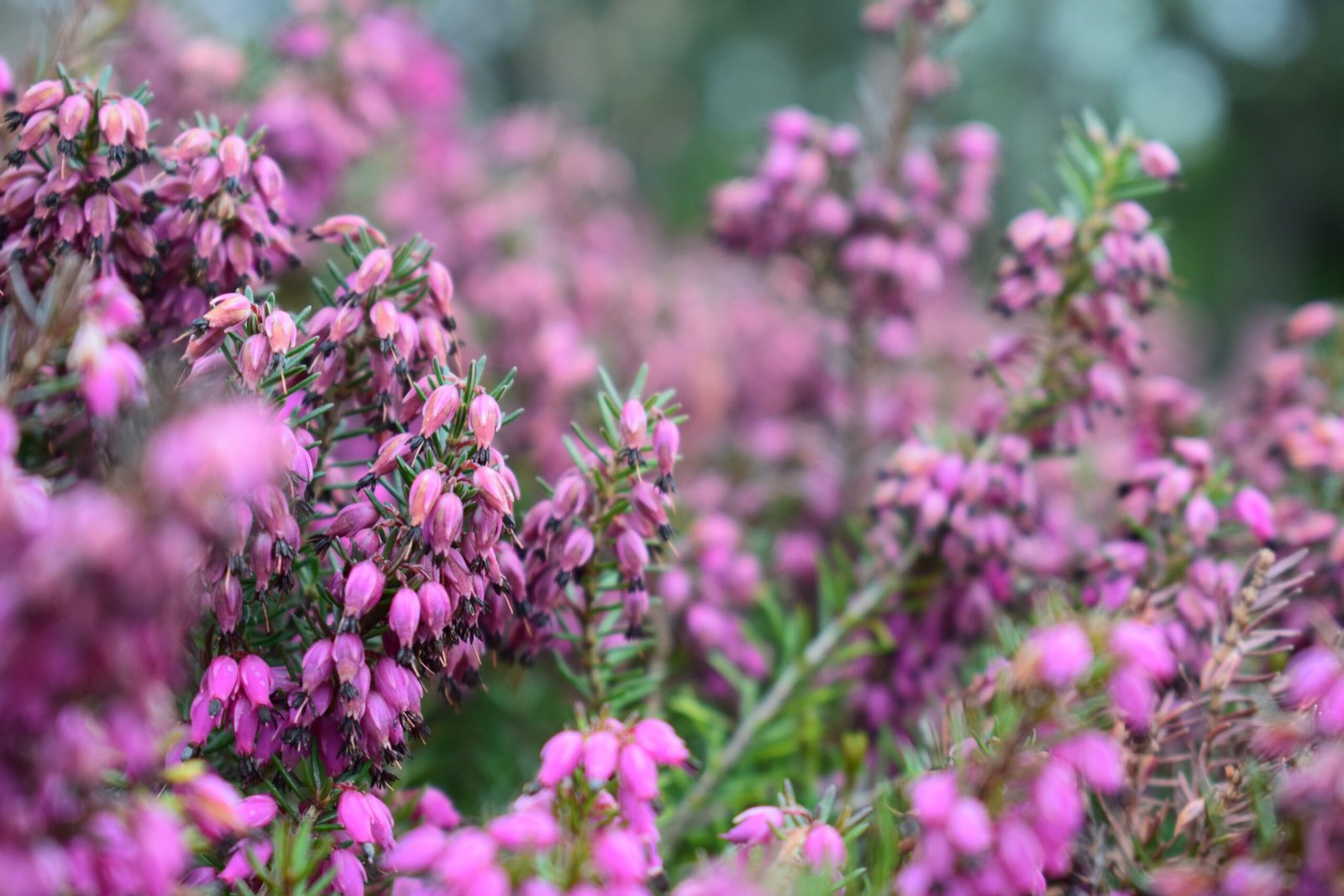- Lotus: How to Plant, Grow and Care for Lotus - 3 November 2023
- Zinnia: How to Plant, Grow and Care for Zinnia - 3 November 2023
- Coreopsis: How to Plant, Grow and Care for Coreopsis - 3 November 2023
Heather plants, also known as Calluna vulgaris, are flowering plants that belong to the Ericaceae family. They are small, evergreen shrubs that produce beautiful clusters of bell-shaped flowers in shades of pink, purple, and white. Heather plants are native to parts of Europe, but they are now commonly found in gardens and landscapes around the world.
About Heather:
Heather is a popular plant that belongs to the Erica genus, which includes more than 800 different species. Some common types of Heather include Scottish Heather, Bell Heather, and Cross-Leaved Heather, each with its own unique characteristics.
Heather has a perennial life cycle and typically blooms from late summer to early winter, adding beautiful colors to your garden during the cooler months.
Characteristics:
Heather is known to attract bees, butterflies, and hummingbirds, making it a great choice for pollinator-friendly gardens. It is also relatively easy to grow and maintain, requiring minimal care once established. While Heather is not edible, it does have a pleasant fragrance, adding a delightful scent to your outdoor space. Additionally, Heather has an extended bloom time, ensuring you can enjoy its beauty for an extended period. It is commonly used as an ornamental plant and can also be used in floral arrangements.
Growing Conditions:
Heather thrives in acidic, well-draining soil that is rich in organic matter. It prefers full sun but can tolerate partial shade. Ensure that the soil is moist but not overly wet, as Heather is susceptible to root rot in waterlogged conditions.
Resistance:
Heather is known to be resistant to deer and rabbit damage, making it a great choice for gardens in areas with these common pests. It is also resistant to rust, fusarium wilt, downy mildew, and powdery mildew, making it a low-maintenance plant in terms of disease resistance.
| Season | Depth | Height | Spacing | US Hardiness Zone |
|---|---|---|---|---|
| Spring, Fall | 1/4 to 1/2 inches | 20 to 24 inches | 12 to 18 inches | 4 to 9 |
Plant Care Instructions
Light Requirement
Heather plants thrive in full sun to partial shade. They can tolerate full shade, but it may affect their blooming.
Water Need
Heather plants require moist, well-drained soil. Water them regularly, especially during dry periods. However, make sure not to overwater as it can lead to root rot.
Fertilizer
Heather plants prefer acidic soil. You can use a balanced acidic fertilizer, such as a 10-10-10 or 20-20-20 formulation. An organic option for fertilizing heather is using a compost made from acidic materials like pine needles or oak leaves.
Pruning
Prune heather plants after flowering to maintain their shape and promote new growth. Cut back any dead or damaged branches. Additionally, pruning can help prevent the plant from becoming too woody and encourage better air circulation.
Toxicity
Heather plants are considered non-toxic to humans and pets.
Common Issues
Common issues for heather plants include root rot, caused by overwatering, and powdery mildew, a fungal disease. Proper watering and providing good air circulation can help prevent these issues. Also, be mindful of pests like spider mites and aphids, which can infest the plants.
Culinary Benefits:
- Heather plants have a unique flavor that can be used to enhance various dishes. They can be added to cakes, jellies, ice cream, sorbets, and other sweet treats to give them a distinct taste.
- Both the leaves and flowers of heather plants are edible and can be used to add flavor to salads.
- The essential oil derived from heather plants is commonly used as a natural food flavoring.
- Some varieties of heather, such as the rose heather, have a delightful aroma that can be infused into teas and desserts.
Medicinal Benefits:
- Heather plants have a long history in herbal medicine for their antiseptic, anti-inflammatory, and healing properties.
- They are frequently used to treat skin conditions like acne, eczema, and burns.
- The essential oil of heather plants is utilized in aromatherapy to promote relaxation, reduce stress, and alleviate anxiety.
- Preliminary studies indicate that heather may have potential benefits in managing diabetes and improving kidney health.
- It is also employed to fight infections and strengthen the immune system.
- In addition, heather plants are sometimes used in the treatment of ulcers, ringworm, and other skin ailments.
Companion Plants for Heather:
1. Lavender: The aromatic blooms of lavender not only complement the colors of heather but also attract beneficial insects like bees and butterflies.
2. Rosemary: This herb not only adds a pleasant fragrance to your garden but also helps repel pests that may harm heather plants.
3. Thyme: The low-growing nature of thyme makes it an ideal companion for heather, providing ground cover and helping to suppress weeds.
4. Sedum: These succulent plants not only create a beautiful contrast with heather but also attract pollinators and provide ground cover.

